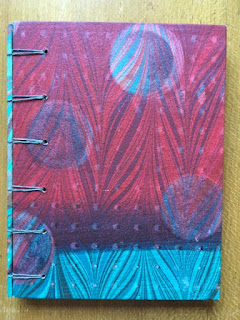A few days ago I got an invitation from my son: How would I like to join him and a small group of friends for a two-night back-packing trip?
YES!
Then I read further. The proposal was to hike the Mother Mountain loop trail in Mt. Rainier National Park in two days. We would camp at the trailhead the first night. Day 1 on the trail: 11 miles, 3115 feet of ascent, 5644-foot descent. Day 2: 6 miles, 3250 feet of ascent, 500 feet of descent. And then we're done.
Ooh. Intimating, especially considering that my hiking partners are all a generation younger than I, and mountain bikers and trail runners, to boot.
My knees began wobbling. Could I do such a thing? I'm a good strong hiker, but I haven't been backpacking for two years (COVID, Mike's death).
The invitation implied a trust that I could do it. Better get ready!
I started by filling my backpack not quite full and taking my ordinary hour's walk, up the mountain and down. Easy as pie.
The next day I had planned to hike to Deadfall Lakes and up Mt. Eddy with a full backpack, but there was too much smoke on the south side of Siskiyou Summit, so I gave up on that trip and stopped instead, on the way home, at Collings Mountain, at the Applegate Lake, and climbed 1040 feet in four miles. It took about an hour.
So far, so good. The next day I climbed up Mt. Elijah: six miles, 1028-foot elevation gain, four hours and a little more. Full pack. No problem.
 |
| Meadows on the trail to Mt. Elijah |
I wasn't anywhere close to the demands of Mother Mountain, but I was doing so well I decided to up the ante faster than anticipated and climb Stein Butte the next day.
That is a 10-mile hike, steeply up, then fairly flat, then steeply up again to the top, then down the same. 2331 feet of elevation gain, doubling what I had been doing the past three days. I usually do it in less than five hours.
With my full pack, it took me six hours, and I was totally worn out by the time I got back to the trailhead. My feet were killing me. My hips hurt from the weight of the pack. I drove home totally exhausted—but grimly satisfied. I still wasn't doing a Mother Mountain equivalent, but I was getting closer.
The next day I rested.
The next day, yesterday, I drove to Crater Lake National Park
and hiked the one-mile trail down to Fleetwood Cove with only a day pack. I took a good long swim in that most beautiful of all lakes, then hiked back up, 700 feet, all in one go, no stopping, pretty easy, and drove to Mt. Scott. I put my full pack on my back and started up.
 |
| Photo from hikeoregon.net |
Mt. Scott is a five-mile hike, up and back, with an elevation gain of 1500 feet. The sign at the trailhead rates it "difficult" and says it takes three hours, and that's what it took me, even with a full backpack. I got to the top in an hour and forty minutes, spent twenty minutes looking at the view, and was back at the car an hour later: three hours. If my math is right, I was climbing around 800 feet an hour. Dividing the first day's climb on Mother Mountain approximately equally for time (as long to hike the shorter uphill portion as the longer downhill portion)—though I have no idea if that's the case—I was doing approximately on Mt. Scott what I would be doing on Mother Mountain, at least for elevation gain. For hours on the trail—nowhere close.
I hike the trails checking my preparedness. Cardio-vascular: excellent. Stamina: pretty darn good. Legs: strong to begin with and getting stronger. Hips: have to learn to bear more weight. Knees: no problem. Feet: hurt on the downhill! Nothing to do about that except bear the pain and stop when I need to. Back: very strong. Attitude: excellent.
I'll do all right. I'm not there yet, but I'm getting there. I still have time for more training. I think I'll do just fine. And I am so looking forward to it!
















